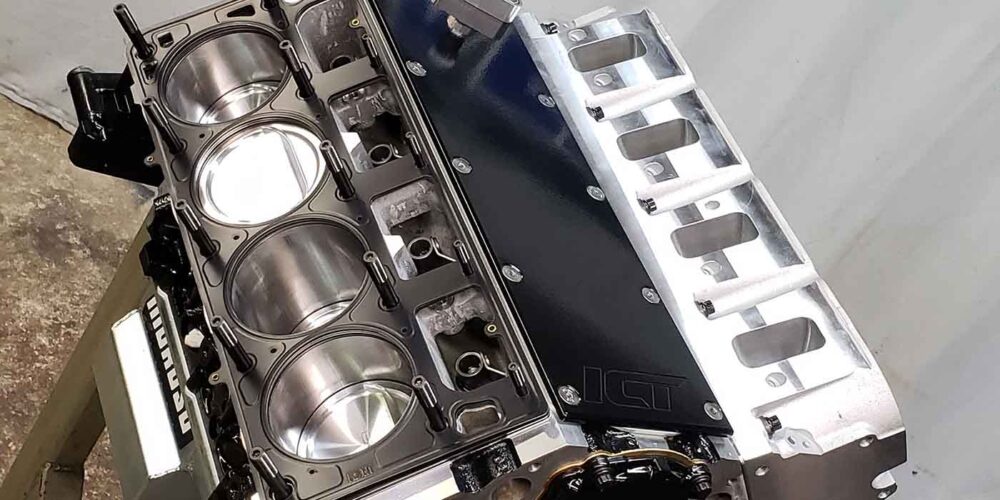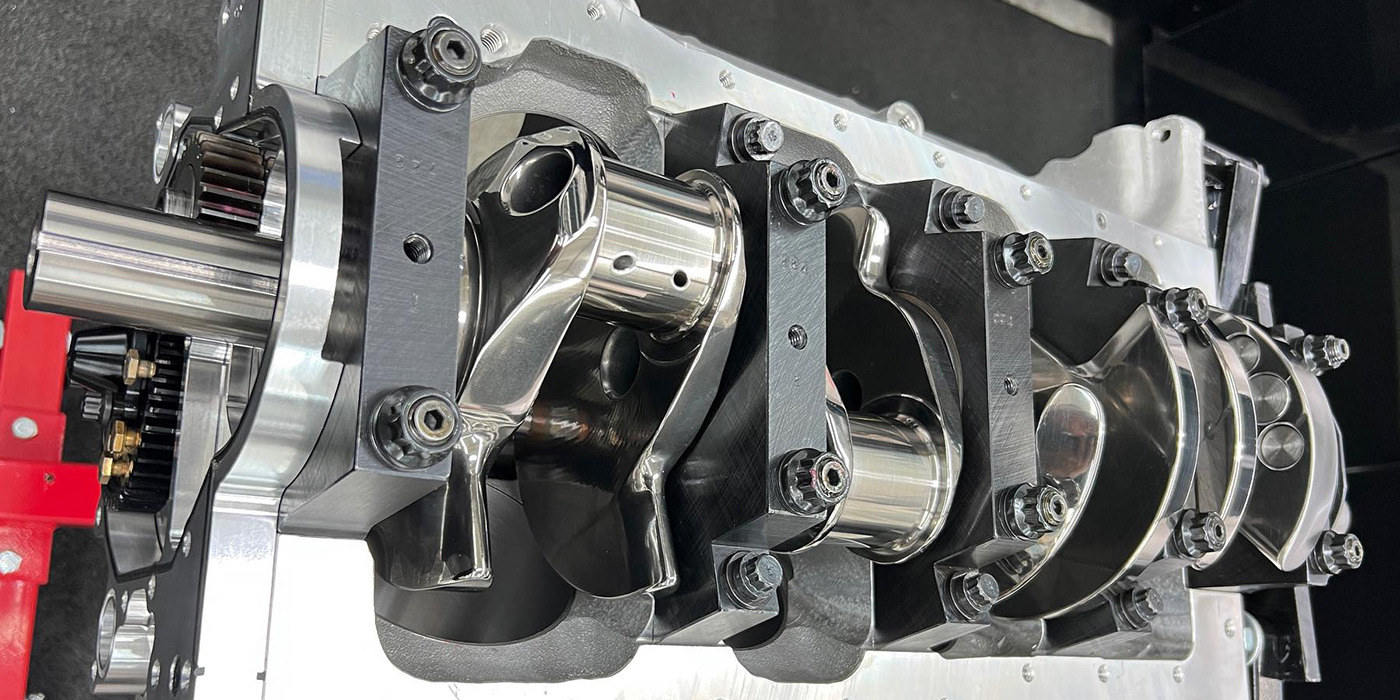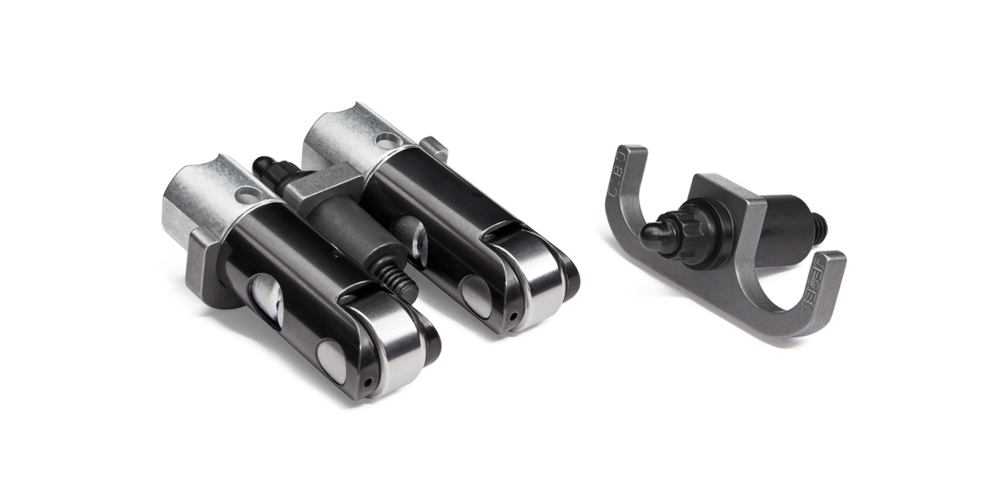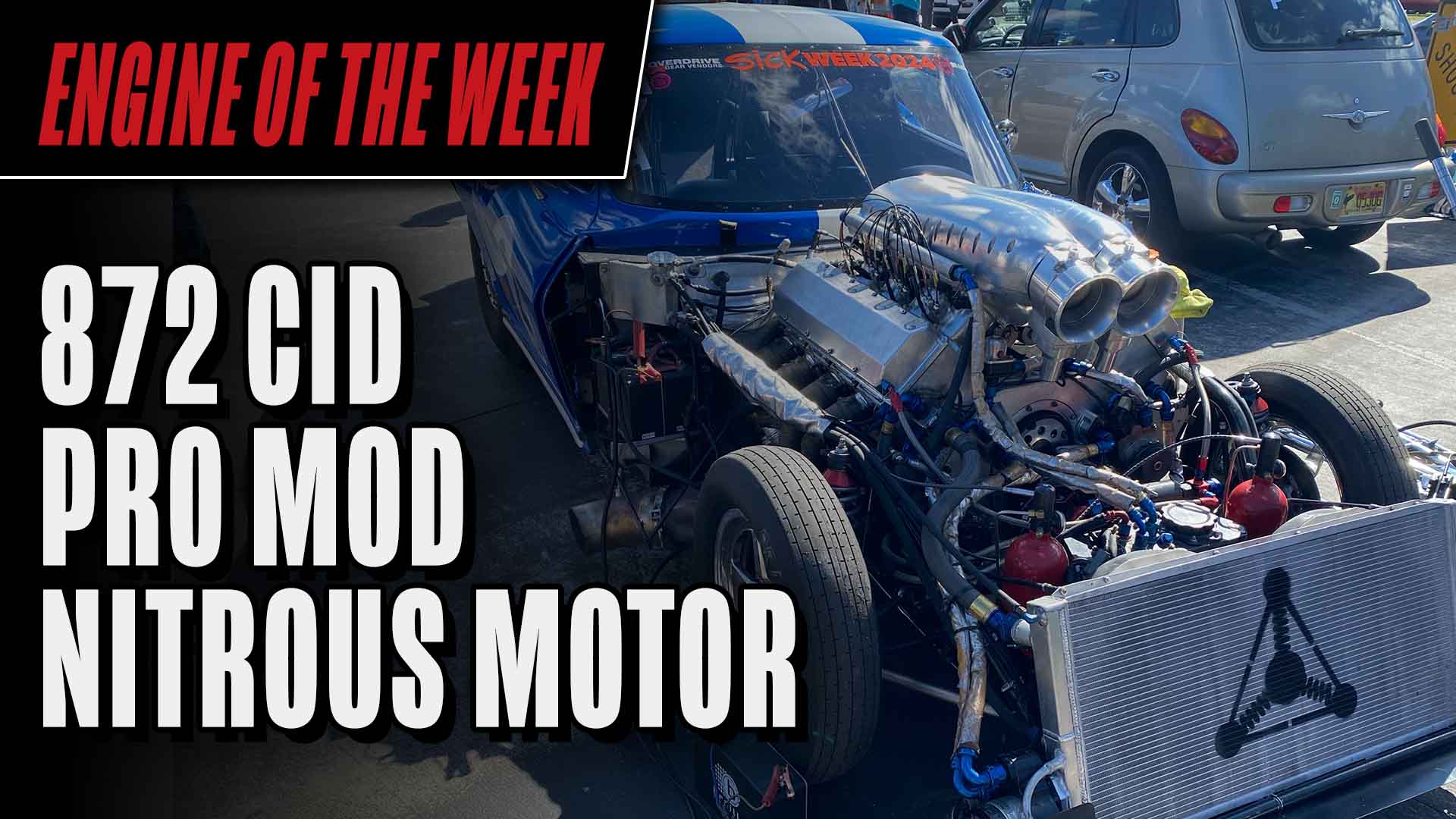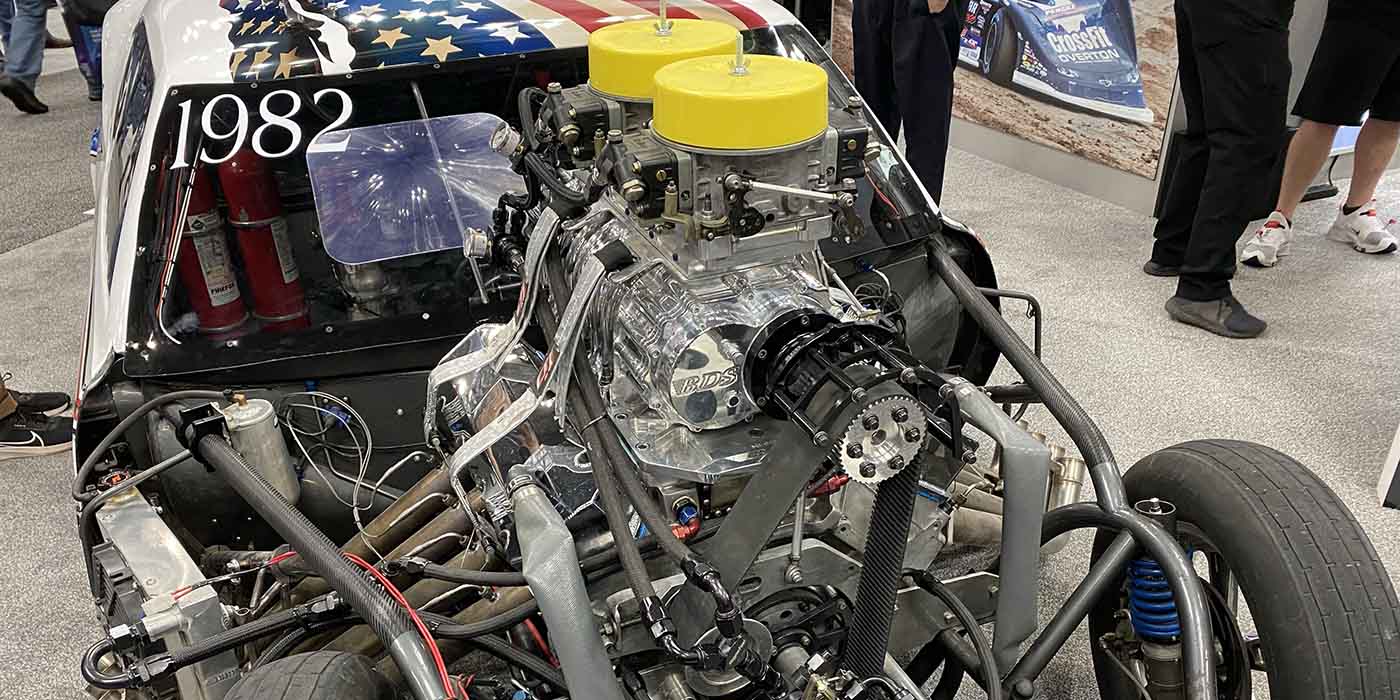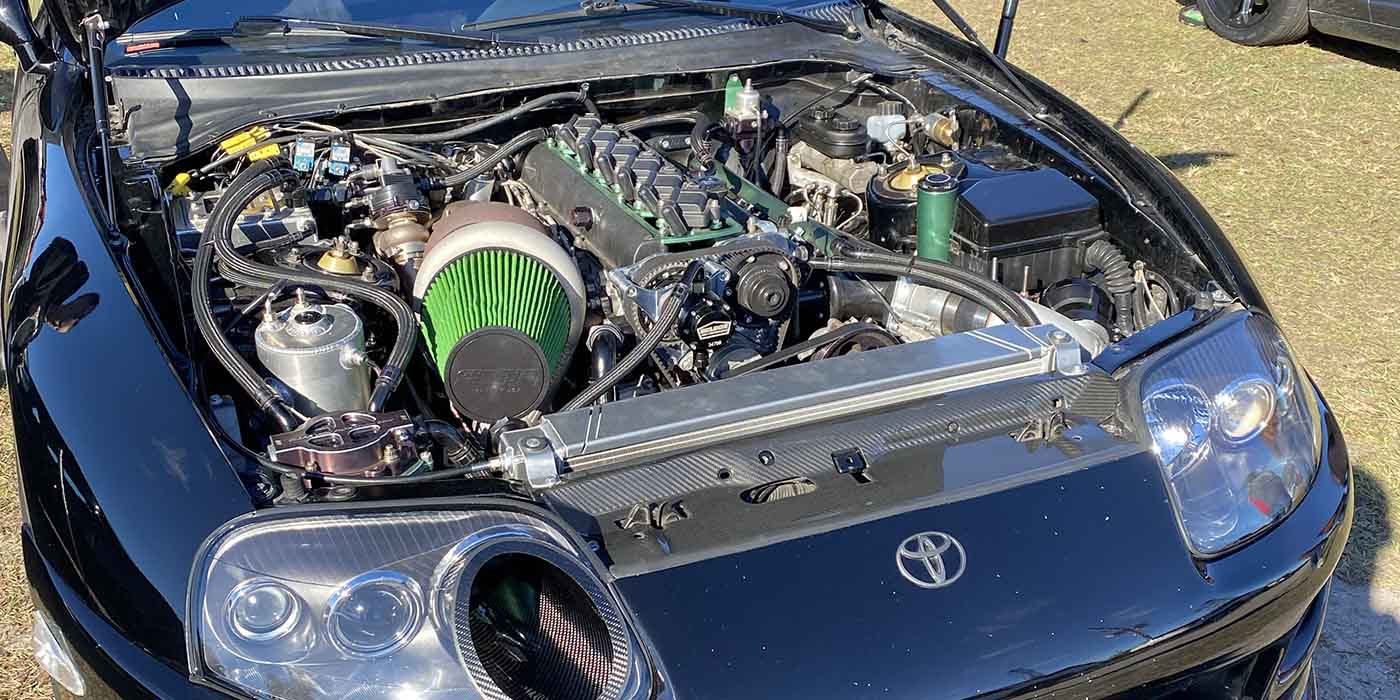Increasing horsepower is all well and good until you blow a head gasket. Theoretically, it will happen at some point. You can’t avoid it forever. It’s like death and taxes. But, like death and taxes, we like to avoid it, and do our best to do just that. With head gaskets, there’s no one factor responsible for preventing it. There are multiple factors that make a difference.
The Block
The taller the skyscraper, the better the foundation has to be. This idea holds true in engine building. The foundation being the critical dimensions of the block. Everything should be measured off the crankshaft centerline. Deck surfaces must be the same height and parallel to the crank centerline, and they must be exactly 90-degrees apart from each other. Cylinder bores must also be 90-degrees to the deck surface. These types of measurements, and the machining required to correct them, can only be attained by shops equipped with line boring equipment and blueprinting fixtures.
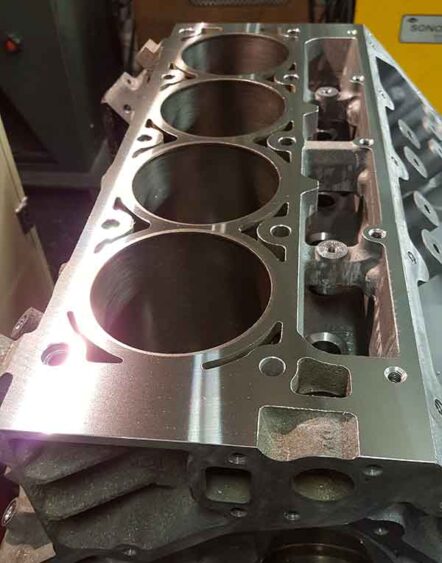
Why is this related to head gasket sealing? Proper head gasket sealing is just one additional aspect of engine building that comes down to precision. If a cylinder bore isn’t located 90-degrees to the deck surface, it can cause uneven deck clearance between the upper and lower sides of the piston tops. A misaligned deck can also cause minor variations in cylinder head alignment, which can lead to ignition timing variations and inconsistent compression ratio.
OE engine production equipment often references off oil pan rails, and these loose tolerances are acceptable on production engines, but not for high performance. If a boring stand references off the oil pan rails, o-ring grooves, as well as cylinder bores can be cut unevenly.
Head gaskets have one of the toughest job in an engine, and now we’re pushing them harder than ever, making it easier to expose the slightest weakness. Attaining an even, consistent clamp load on head gaskets is critical, and at highest level of precision, it all leads back to engine block preparation.
The Surface
With the surface finish, there’s more here than meets the eye, and it’s another critical factor. Aaron Hunter of SCE Gaskets puts a perfect spin on it. Let’s just say a simple gasket swap doesn’t do the trick.
“Far too often we hear people say, ‘The deck surfaces are good since the engine is out of a new vehicle and only has a few hundred or a few thousand miles on it. There was no need to resurface it, we checked it with a straight gauge,’” Hunter says. “Truth be told, the MLS (multi-layer steel) head gaskets the OEs use can be aggressive to seal the higher combustion pressures of modern engines where they are expected to last 200,000-plus miles. We have seen brinelling around the top of the cylinder and the combustion chamber, which is almost invisible to the naked eye, but it’s not invisible to the high pressure of combustion events which are happening multiple times per second. These same people will install a new gasket, expecting it to perform, with uneven clamp load in the most critical area, and they blame the gasket for failing, but it was a failure by skipping necessary processes. These situations are usually from people who pull cylinder head(s) while the engine is still in the car so they can install a better gasket to handle the new combustion pressure loads that will be generated by their new power adder(s).”
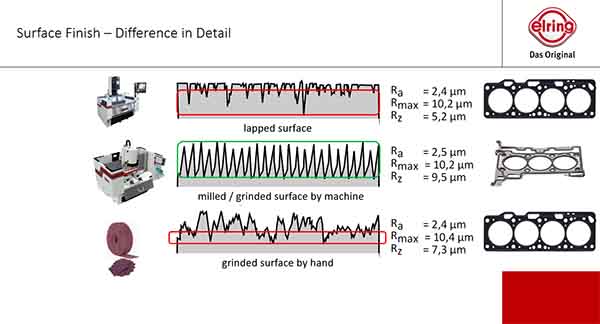
Identifying the quality of a surface finish comes by a measurement of surface irregularities. The measurement is taken with a profilometer and expressed in roughness average (Ra). Ra averages the peak-to-valley heights of a flat surface. The lower the number, the smoother the surface. “Any head gasket needs the proper surface to fulfill the sealing demands of the gasket,” says Florian Kiziak of Elring. “We include Ra recommendations with all our gaskets.”
And gasket companies like Cometic do the same, saying its MLS head gaskets require an Ra of 50 or finer, which couldn’t even be felt by the sxcratch of a finger nail.
“The surface finish of the block and cylinder head is crucial for achieving a proper seal and preventing leaks,” says Cometic’s Brendan Chess. “Cometic MLS head gaskets are made with a high-proprietary polymer coating and are designed to accommodate some very minimal surface irregularities, but still require a carefully prepared surface.”
While gasket manufacturers recommend a different Ra for different materials and different gaskets, does that hold true for performance?
“I have never seen too smooth of a deck surface,” Hunter says. “The gasket engineers who were sealing up NASCAR back in the late ‘80s and ‘90s did say they had to run a 50 to 60 Ra to ‘bite’ the gasket and keep it from kicking out… a composite head gasket. I would not recommend that now because we have so many options where we can lower the maximum horsepower for a composite, for example a max of 600 hp and above that they need to use a multi-layer steel (MLS) gasket. Around 1,400-1,600 hp (V8 platform) they need to look to our Vulcan Cut-Ring system, and around 1,700-2,000+ hp they need to look to our Pro Copper with a stainless-steel o-ring setup, or stainless-steel o-ring with receiver groove in the opposite deck setup.
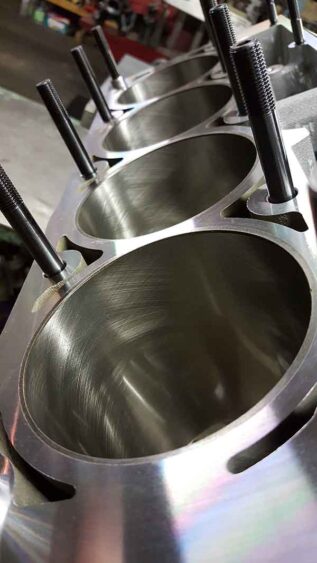
“Generally, I tell people they need to get the decks as smooth as possible, and if they have a skidless profilometer they need to be checking for waviness (the naked eye cannot see this, and a feeler gauge cannot measure this) in the search for zero waviness or keep it as minimal as possible.”
Profilometers are not new, but there are two different types to be aware of when you’re getting into these types of measurements. A skidded profilometer is one that has a small foot which travels along with the probe, making the surface being measured the reference. These are perfect for irregularities on “flat” surfaces, but since the surface is the reference, they can’t measure a radiused surface.
A skidless profilometer has a measurement probe with no associated foot, so it can measure both flat surface irregularities as well as a radiused surface, giving them the ability to detect waviness. Skidless profilometers are more expensive, but there’s a price for precision…and a price to be paid for the lack of it!
It’s also important to note when using a profilometer, there are different measurements that can be taken, and many prefer to utilize the Rz measurement, which is the average difference between the peak height and valley depth. It gives a more accurate indication of the texture across the surface.
The Gasket
Composite gaskets are more typically designed for replacement gaskets on stock engines so equipped. They’re very good at sealing oil and coolant passages and more forgiving to surface irregularities, but while they can handle moderate compression topping out around 11:1, the lack of backing to the combustion seal prevents them from handling high cylinder pressure and therefore the high-performance realm ignores them.
MLS head gaskets are popular for performance engines because increased web strength allows them to handle higher compression ratios and temperatures, but they require precision machining for a proper seal. MLS head gaskets have a spring memory in the embossments of the plates which helps maintain the clamp load. The embossments create a seal on oil and coolant passages, and more aggressive embossments seal the combustion chamber. Today, MLS gaskets are commonly used by OEMs due to their durability, but they are limited with extreme levels of horsepower and boost, and they can be damaging to the block and head surface.
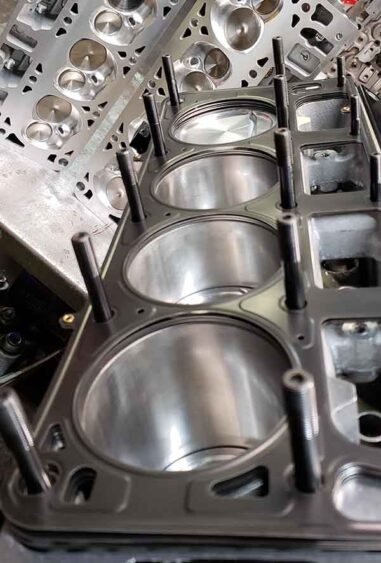
Copper head gaskets have been used in racing such as Top Fuel and Blown Alcohol for many years. These require a receiver groove be machined into the block and head, and a steel wire placed into one of the grooves. When tightened, the gasket is forced into the opposing groove, creating an extremely effective seal.
Copper is a very malleable material, and the advantages are highlighted by the ability of these gaskets to maintain a combustion seal on high-horsepower, high-boost engines that exhibit the greatest amount of movement between the block and cylinder head. Copper gaskets also tend to “push” as opposed to “blowing,” often giving warning that the head gasket is weakening, allowing tear down and repair long before any catastrophic failure occurs.
The machine work required for a copper head gasket is critical, and it leads back to properly preparing and machining the block. Copper gaskets are designed primarily for dry deck engines, and when using in a wet deck application, sealing oil and coolant passages can be a challenge, with additional sealant required. Copper head gaskets will require retorquing.
Even though composite, MLS, and copper are the most familiar types of head gaskets, some companies offer a proprietary gasket that’s a step above MLS in the combustion pressure it can handle, but offers oil and coolant sealing such as that of a composite. For the best advice when deciding upon a head gasket, reach out to the professionals. Their knowledge is a useful tool, and they’re happy to look the aspects of any build and recommend a gasket that meets your engine’s needs.
The Fasteners and The Installation
High-quality fasteners, the proper torque specifications, and sequence, all of this should be old hat, but the question often remains, is a retorque ever recommended?
“The landscape is changing with all of the different gasket technologies and systems,” Hunter says. “An equally huge factor is the design of the blocks and cylinder heads of modern engines compared to what we’ve learned and has become ‘tried and true’ practice with the classic era of muscle cars.”
Hunter explained that classic muscle cars featuring engines of lore such as the small- and big-block Ford and Chevy, Pontiac and Oldsmobile, Mopar, and even newer engines that proved popular to modify such as the Mitsubishi 4G63, all needed to be retorqued after the first heat cycle with any copper head gasket. MLS gaskets could get away with no retorque, and while some engine builders have said they retorqued multiple engines using MLS gaskets with no movement on the studs, others have reported different results, so defaulting to a retorque is a good idea. Composite gaskets should also be retorqued due to creep relaxation in the gasket material.
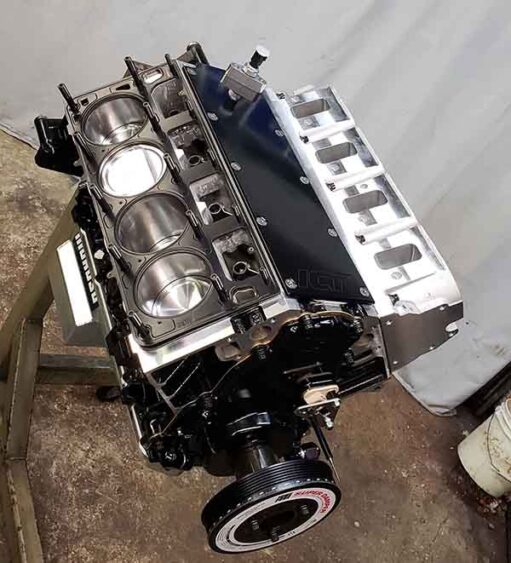
“Modern engines have been a bit different,” Hunter says. “Kenny Duttweiler and I were talking mid-2022 and he reported that he checks torque retention on LS/LSX platforms. He will assemble the engine, let it sit overnight and go back to stud #1 in torque sequence and pull to the max torque value. If he gets movement, he’ll go through all studs doing the same thing, let the engine sit until the end of the day and repeat the whole process. He said he will check torque retention four to five times until he gets no movement from the cylinder head fastener. It was this approach that solved the head gasket issue on the Speed Demon where he is using our copper head gaskets with a stainless-steel o-ring and receiver groove setup.”
The Final Word
Any head gasket is only as good as the installation, and that means using the proper technique and application. Additionally, with so many gasket technologies and gasket systems available, can the consumer or builder pick the right technology for the intended build and can they prepare, assemble and tune for a long-term, positive result?
As technology and research continue to evolve, experience builds alongside, and gasket manufacturers will always be the best resource for the latest information and techniques.
“Our strongest focus on developing new gasket technology is constantly researching and implementing technologies that increase the durability and reliability of gaskets, new materials or combinations of materials to enhance the gasket’s ability to withstand extreme temperatures, pressures and chemical environments,” Chess says. “Another focus is adapting gasket technologies to suit the evolving designs and requirements of modern engines, along with redesigning prior applications due to the aftermarket offerings, modifications to increase power, or even redesigned heads and blocks.”

